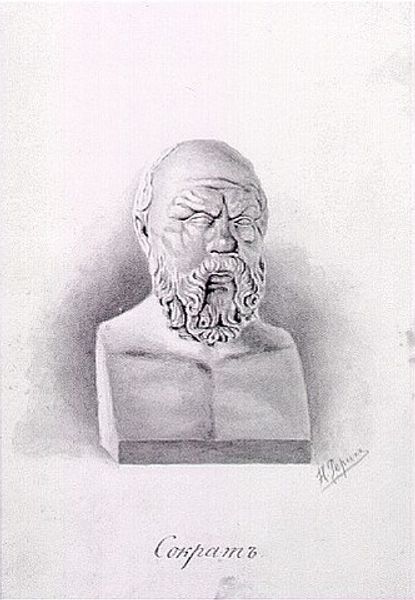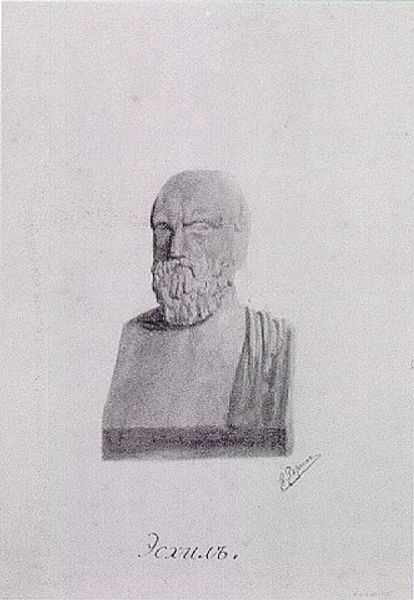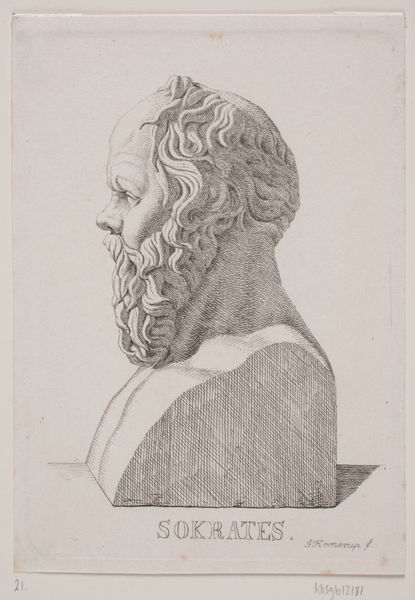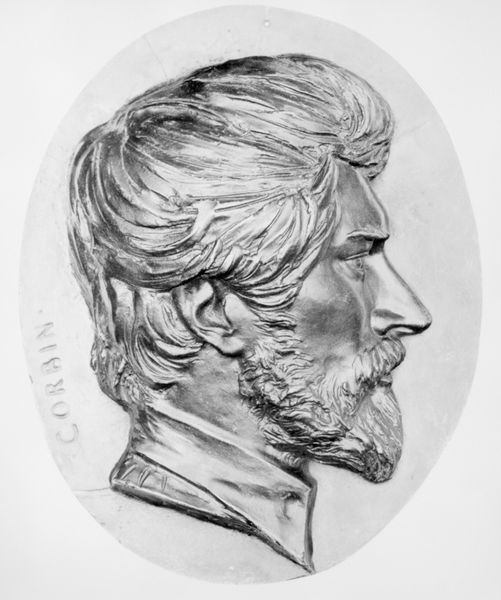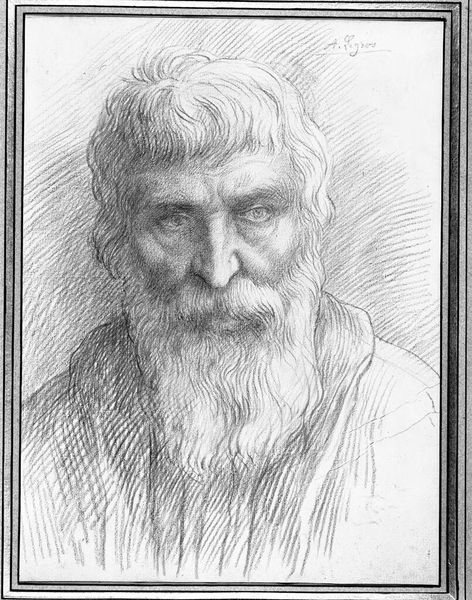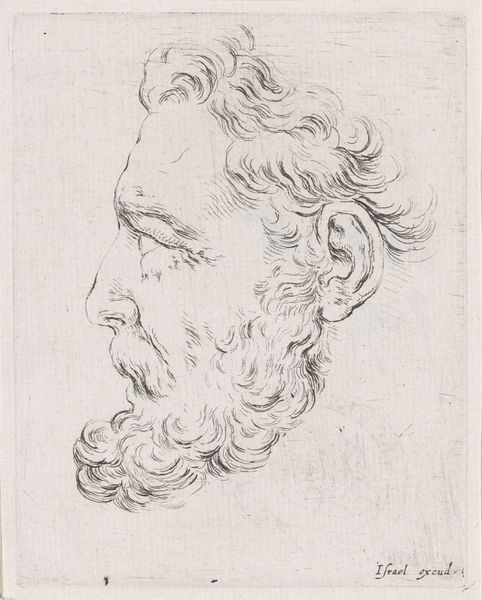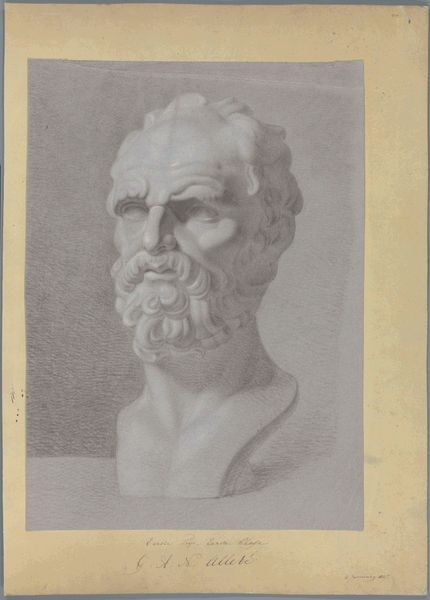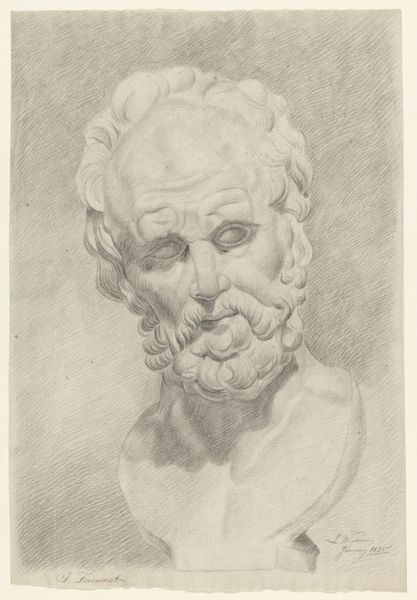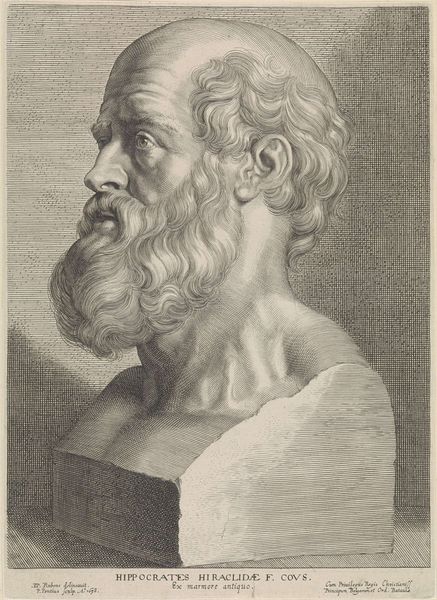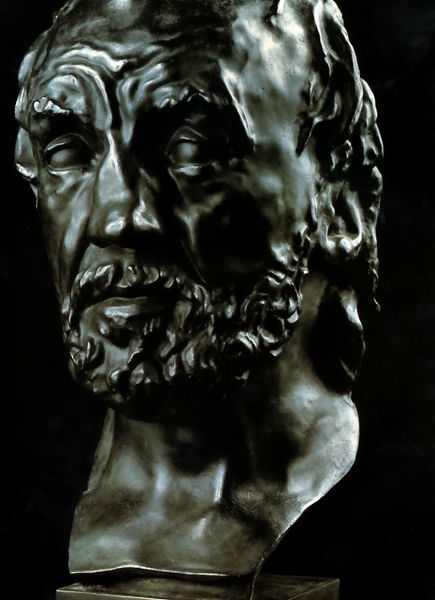
Copyright: Public domain
Editor: This drawing from 1893 by Nicholas Roerich, titled *Euripides*, appears to be made with pencil and charcoal. It’s a bust, and it seems very neoclassical. What do you see in this piece, looking at it through an activist lens? Curator: Immediately, I consider the legacy of figures like Euripides and how they've been instrumentalized to perpetuate a Western, male-dominated intellectual tradition. How do we grapple with this complex history? I mean, what does it mean to continue depicting and valorizing these figures? Is it simply aesthetic appreciation, or is there something more at play here? This kind of art implicitly validates particular knowledge hierarchies. Editor: So, it's not enough to appreciate the artistry without considering its role in power dynamics? Curator: Precisely. Roerich made this in the late 19th century. What do you think that the European understanding of this image was then? Also, how might the perception have been different in Roerich's native Russia? It's important to consider how the drawing reinforces or challenges existing power structures and if it perpetuates certain narratives while silencing others. For example, where are the female playwrights, philosophers, and leaders represented in this artistic canon? Editor: I never thought of it that way before. I guess by focusing on only *some* historical figures, art helps reinforce their perceived importance… which is kind of unfair to everyone else. Curator: Absolutely. And that’s precisely why we have to look at art, even drawings that seem simple, critically. Art can be complicit in the politics of remembering and forgetting. What can art do to bring marginalized perspectives into view? Editor: This has given me so much to think about. I am going to start seeing everything through an entirely new lens now! Curator: That's all I ask.
Comments
No comments
Be the first to comment and join the conversation on the ultimate creative platform.

